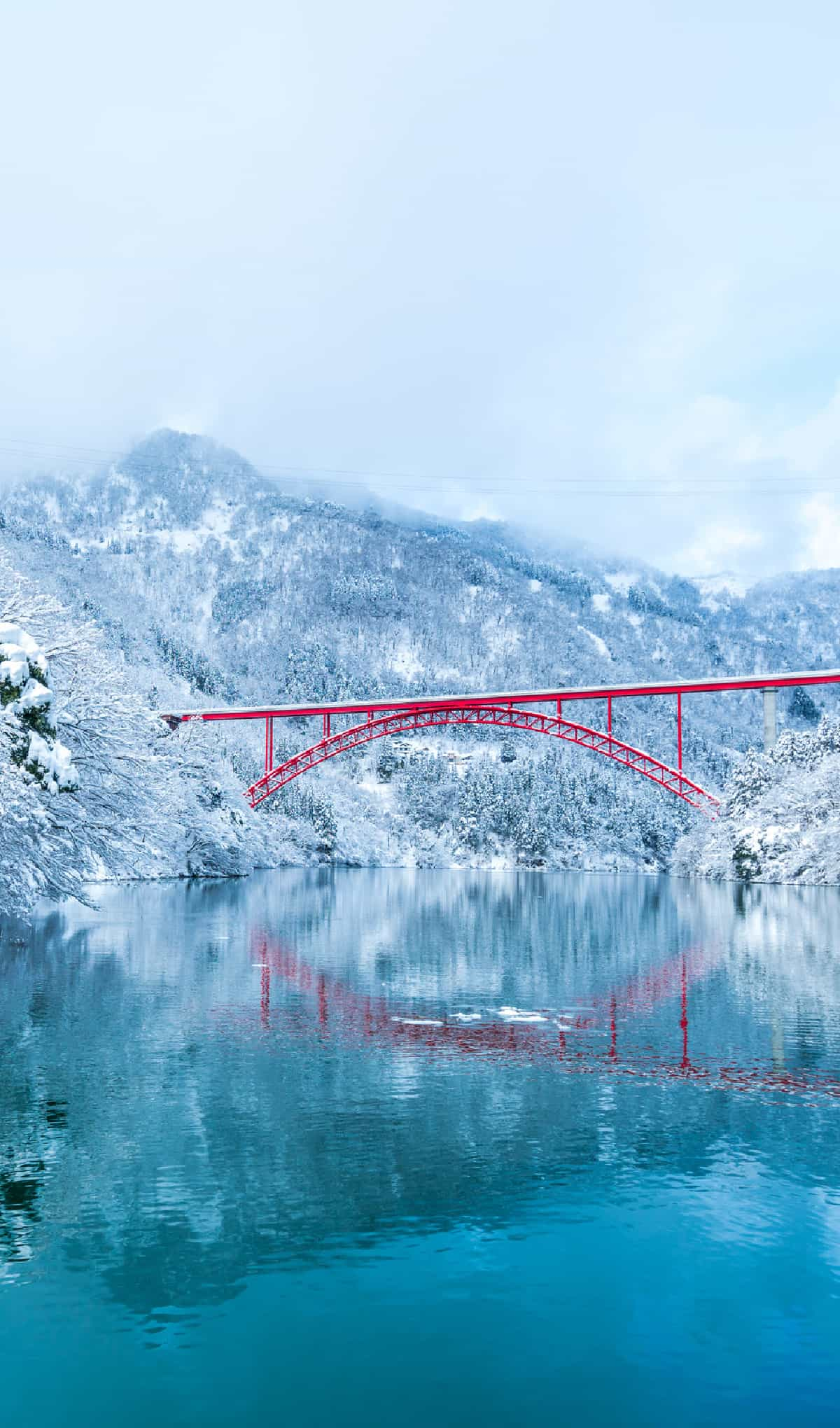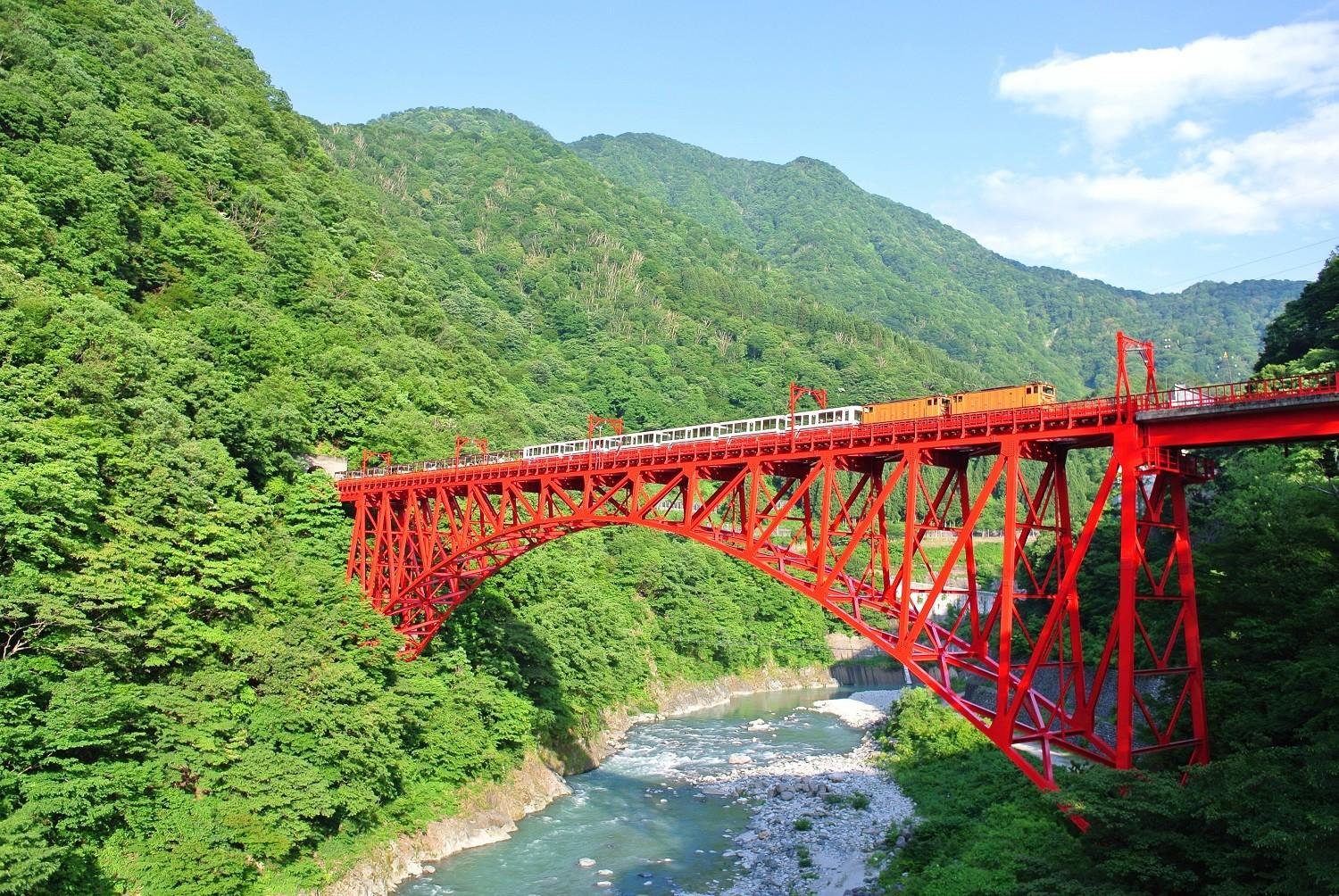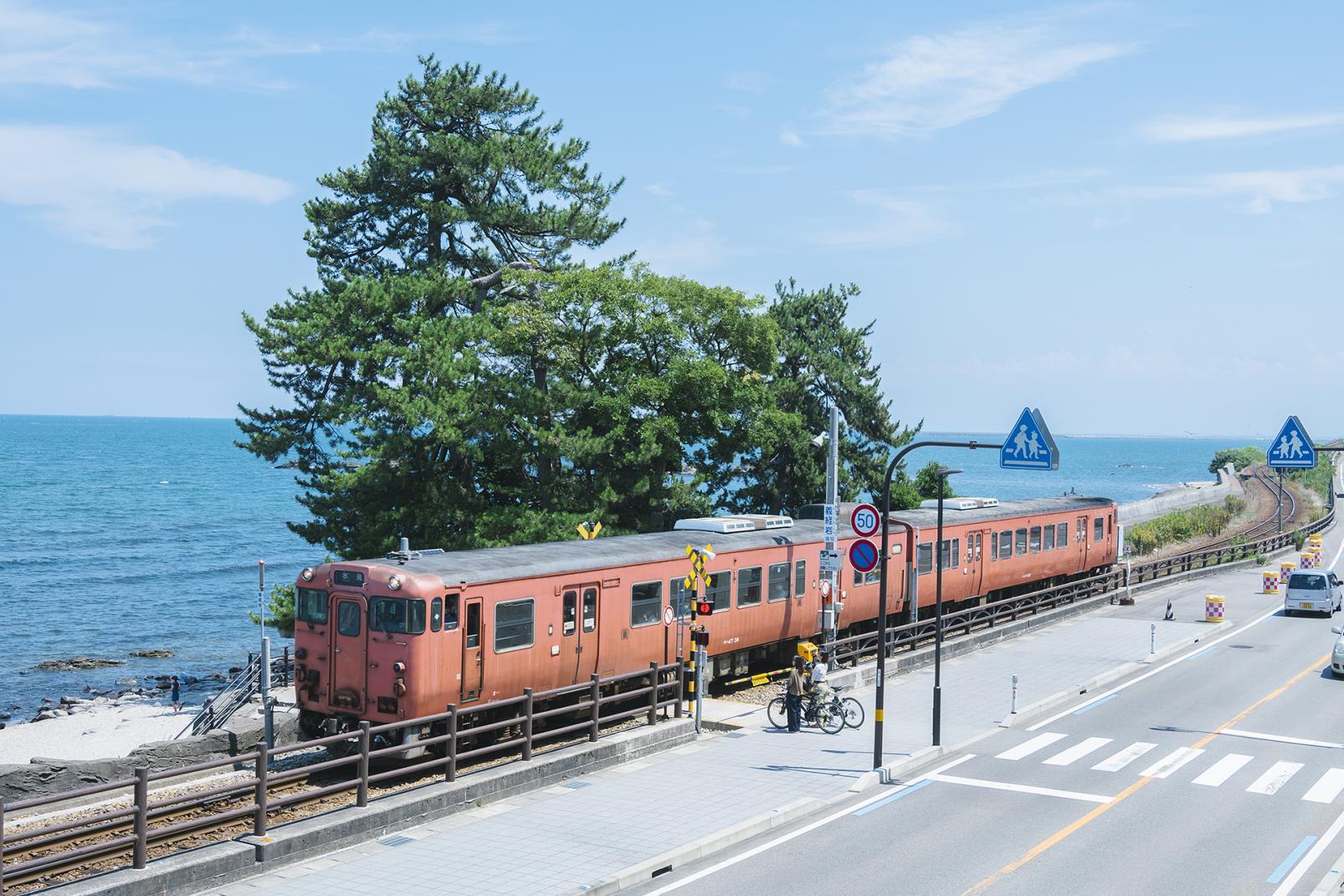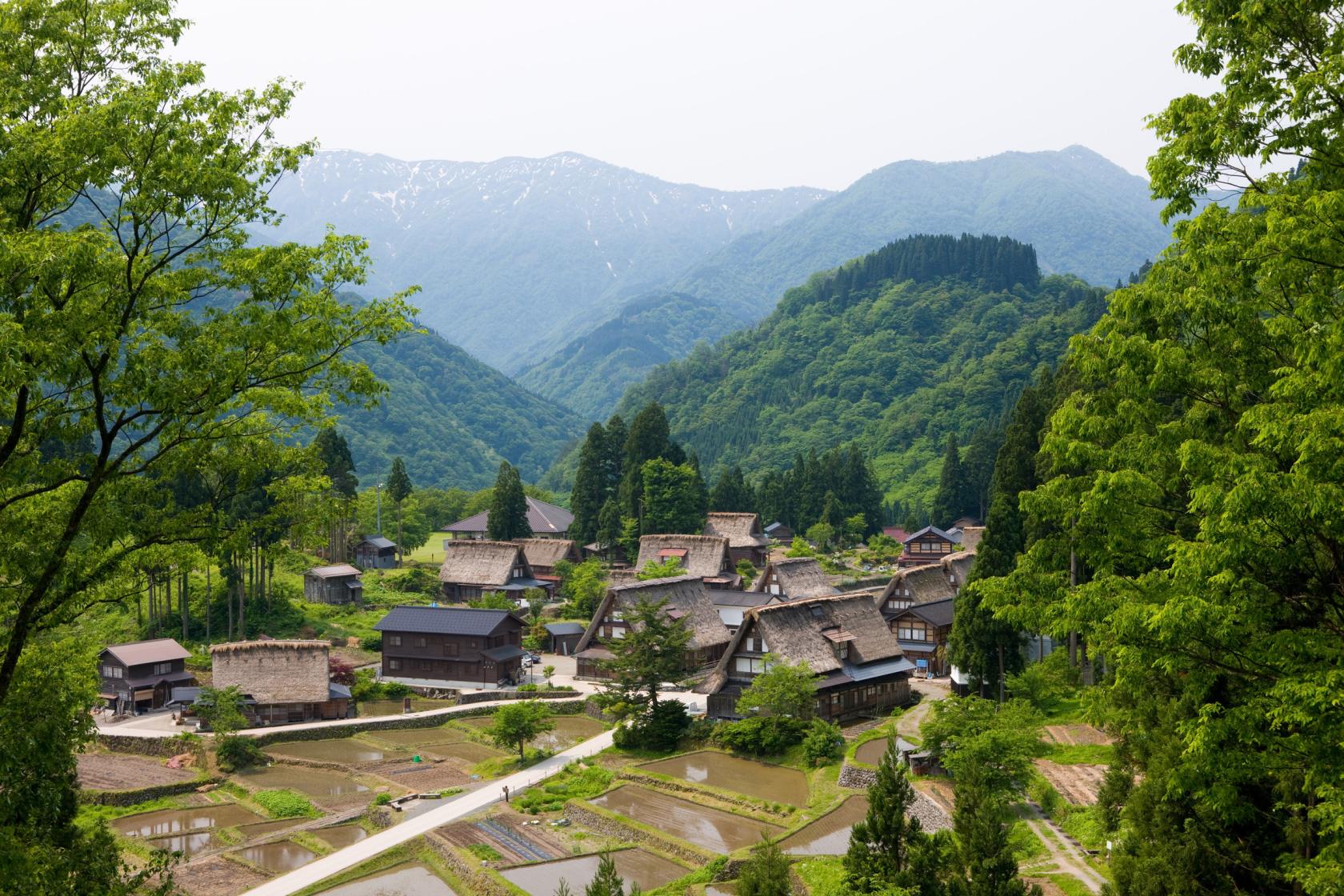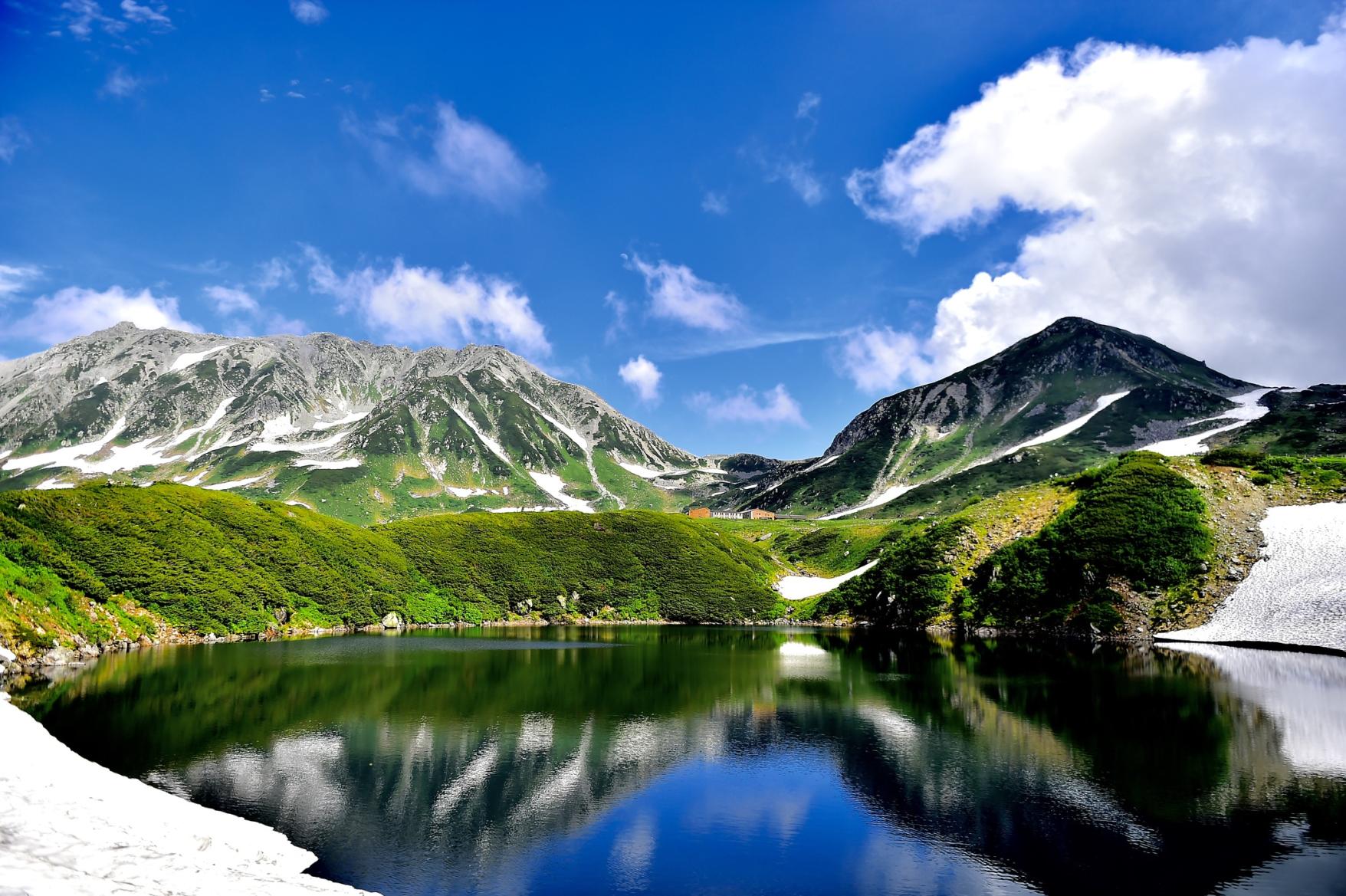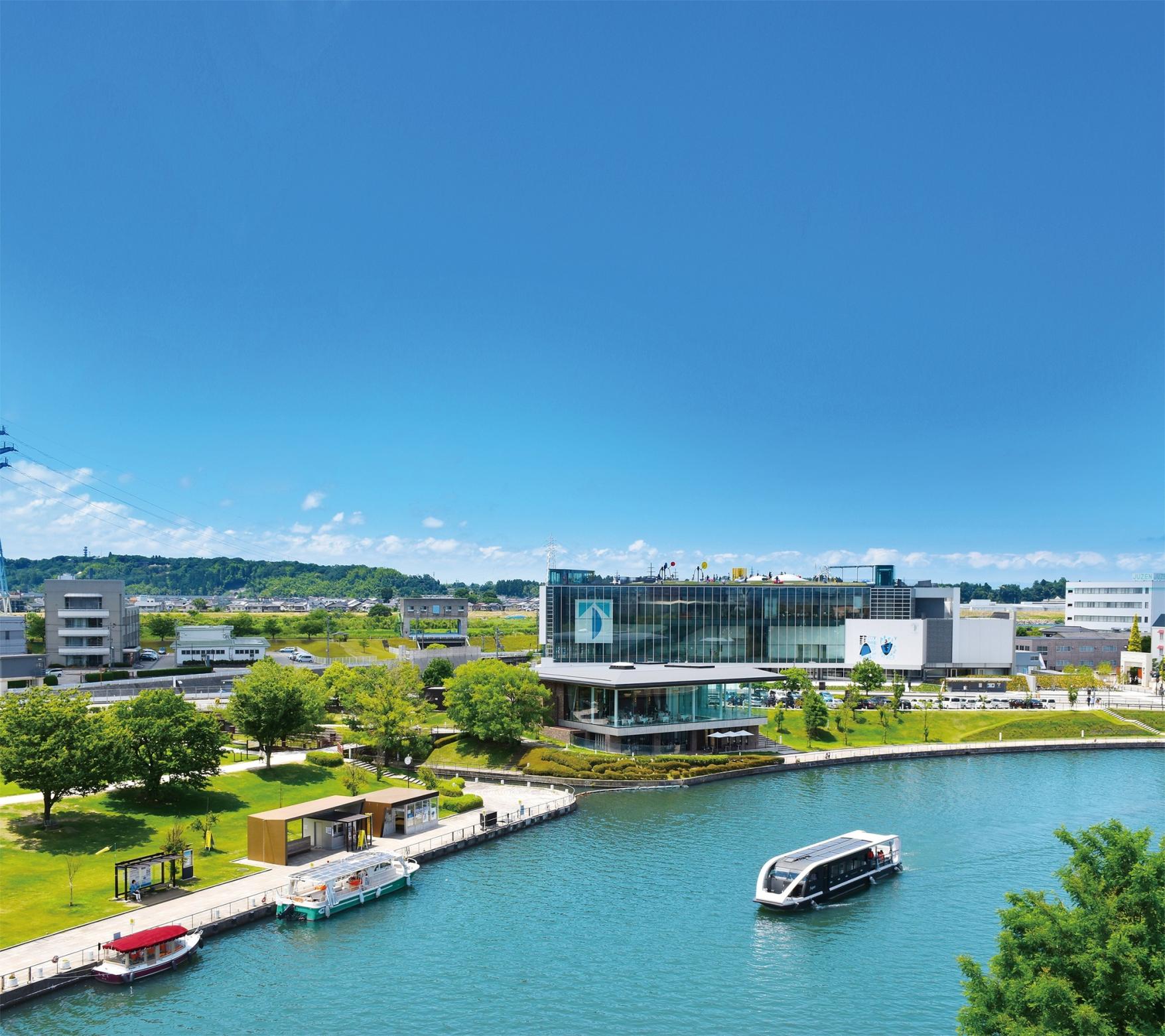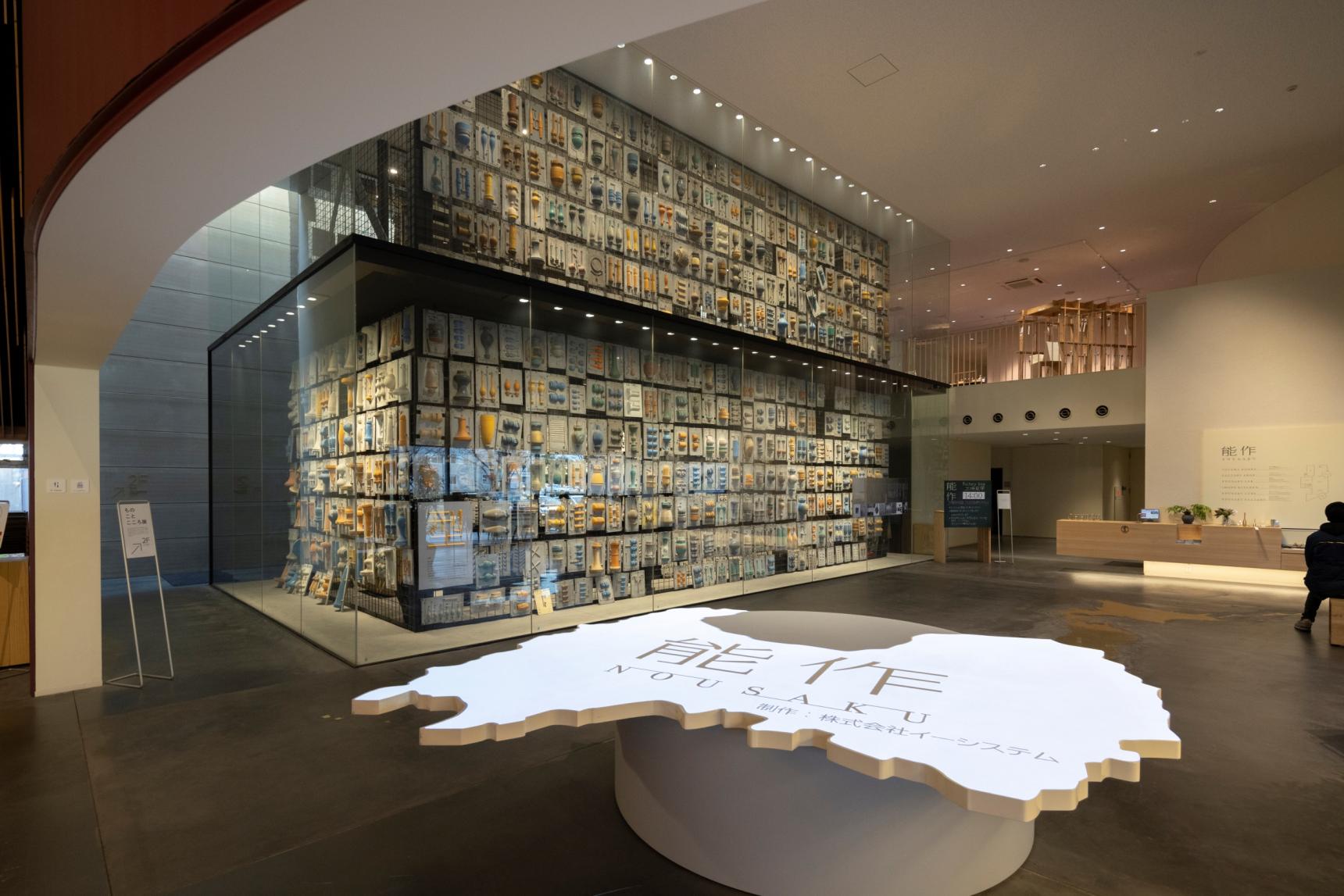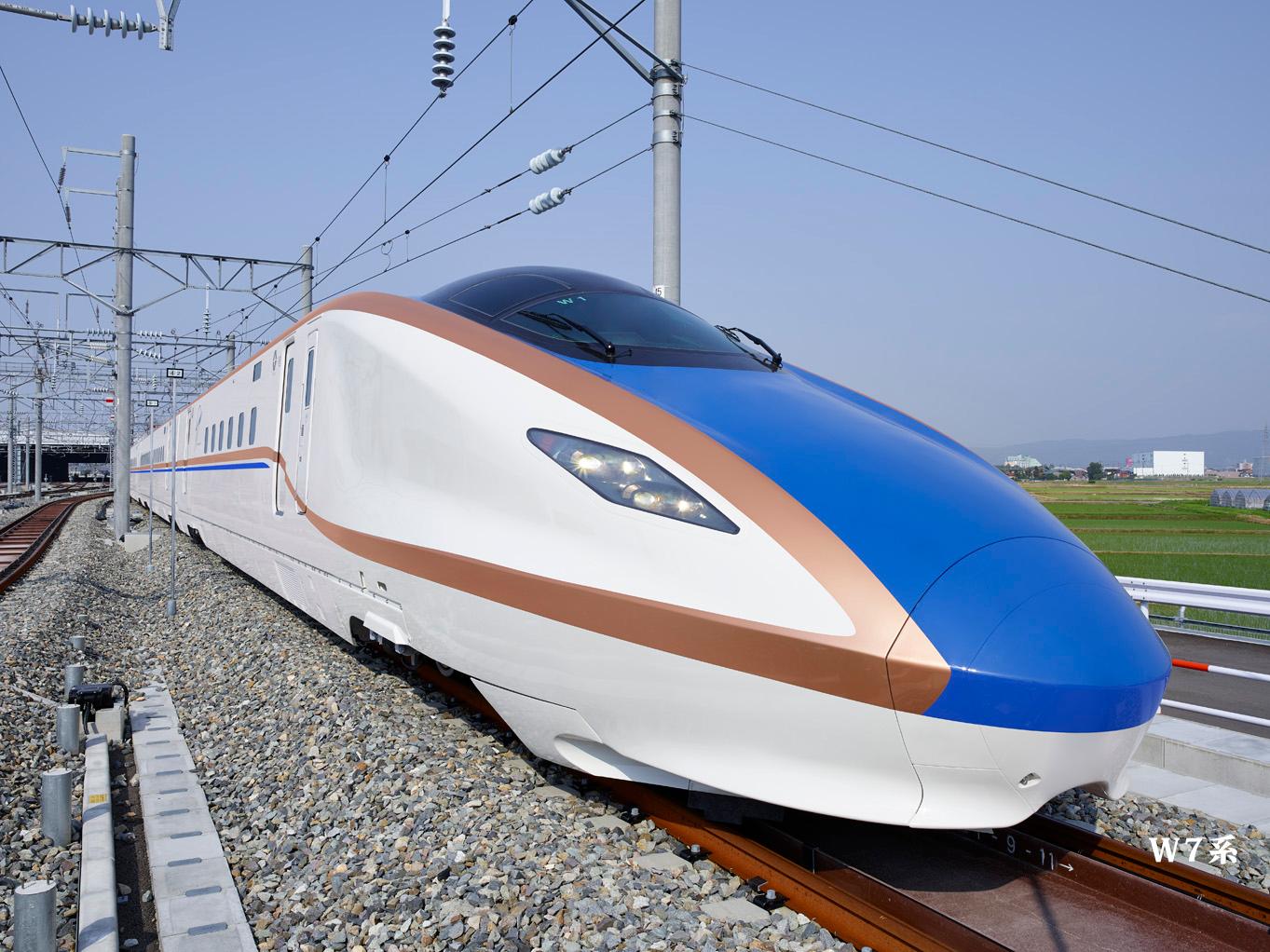Take time to immerse yourself in Toyama’s rich culture and beautiful landscapes
Discover Toyama’s natural beauty and rich culture: 4 days, 3 nights
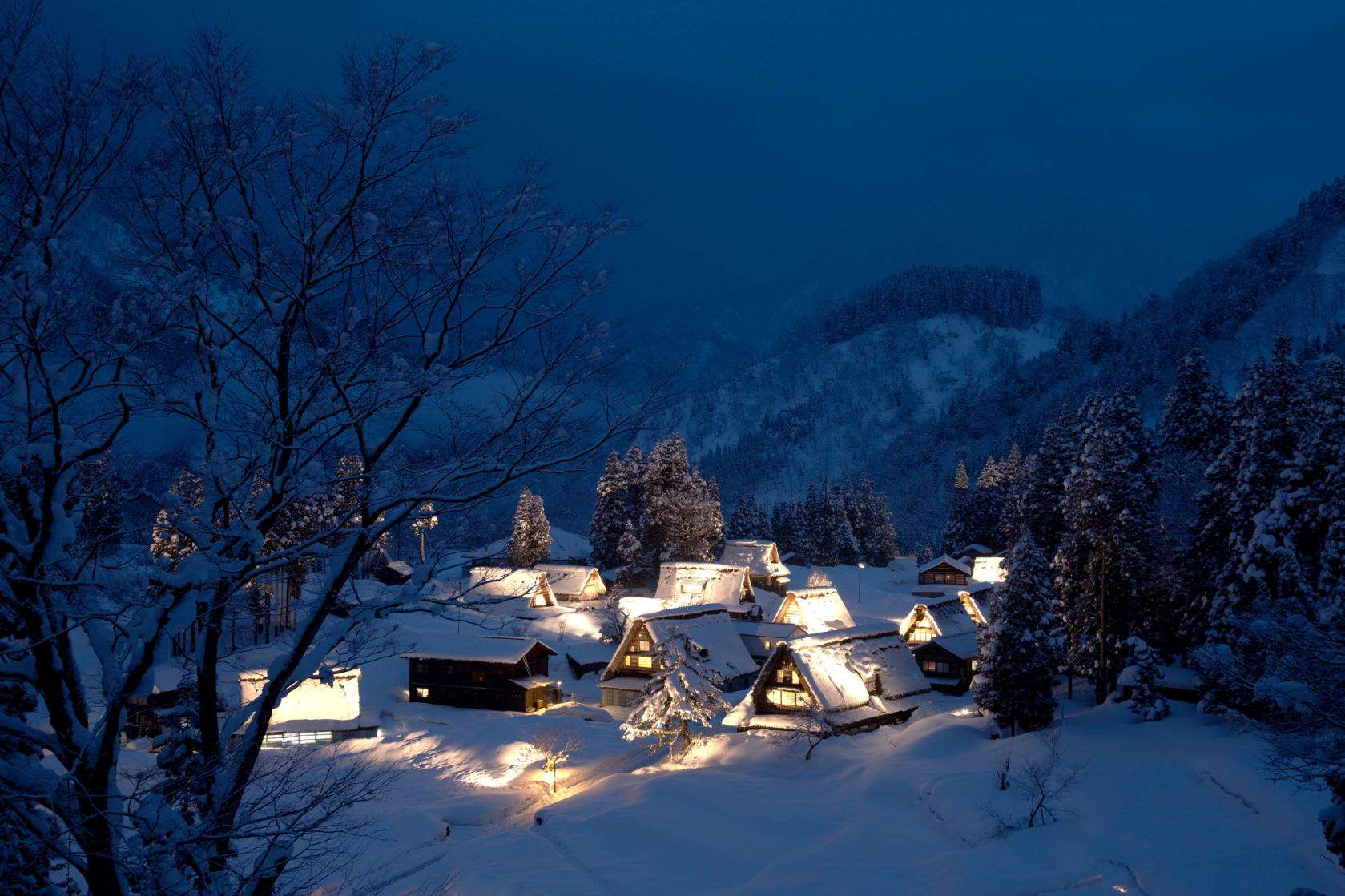
Bound by snow-capped mountains and the Sea of Japan, Toyama is the ideal destination for enjoying spectacular scenery, along with a rich heritage of craftsmanship. Take the time to explore the prefecture, from the dramatic beauty of Kurobe Gorge and the snowy Tateyama Kurobe Alpine Route to craft ateliers in Takaoka and charming thatched-roof houses in the villages of Gokayama.







- Suggested Length4 days, 3 nights
- Main TransportationTrain, Bus, Walking
START
Day 1
Kurobe Unazukionsen Station
Train: 30 min
Kurobe Gorge
The emerald green Kurobe River has carved a deep valley between the Tateyama and Ushiro-Tateyama mountains in eastern Toyama Prefecture. See the iconic red Yamabiko Bridge which spans the entrance to Kurobe Gorge, from Unazuki-Onsen Station or the nearby Yamabiko Observation Platform.
The Kurobe Gorge Railway is an open-air sightseeing train that traverses a winding track between Unazuki and Keyakidaira Stations, running from the end of April to the end of November. The journey takes around 80 minutes and crosses more than 20 bridges, with panoramic views of the gorge below. As the train makes its way towards Keyakidaira Station, look out for interesting rock formations, and consider alighting at Kanetsuri Station for open-air bathing at the Kanetsuri Kawara hot springs.
From the final stop, Keyakidaira Station, you can explore Hitokui Iwa, a cliff that curves over the path like an open mouth, and Sarutobikyo Gorge, with stunning views along a short walking trail. You can take guided walking tours of the area with naturalists from the Keyakidaira Visitor Center.
Stay overnight in Unazuki Onsen to enjoy the nearby hiking trails and relaxing hot springs. Unazuki-Onsen Station is only around an hour and a half from Toyama Station
link to the 'Kurobe Gorge: Secluded Hot Springs, Scenic Walks, and Spectacular Scenery'
| Address | 938-0293 富山県黒部市黒部峡谷口11 | |
|---|---|---|
| Telephone Number | 0765-62-1011 | |
| Closed | Closed December-April (Subject to amount of snowfall) |
DAY 2
Unazuki-Onsen Station
Train: 1 hr
Cycling in Takaoka
Takaoka City, about 45 minutes northwest of Toyama Station by train, was established as a center for metal casting in the seventeenth century. Many metalworking artisans continue to pursue their craft in the historical Kanayamachi district, creating works ranging from Buddhist ritual objects to contemporary homeware.
A bicycle is a great way to explore the city and see some of the nearby coast, and rental bikes are available from the Takaoka City Tourism Association offices at Takaoka and Shin-Takaoka stations for exploring the city, as well as at Himi Station for exploring the coast.
The city was established in the seventeenth century as a castle town and a center for artisans, and the Kanyamachi district, Kokozan Zuiryuji Temple, and Shokoji Temple are beautiful sites that can be explored on foot, or on two wheels. A bicycle will allow you more time to explore the fascinating history of these and other charming Takaoka sites, such as Takaoka Castle Park, and the nearby Takaoka Daibutsu, one of Japan’s “Three Great Buddhas,” standing at 16 meters tall.
Head to the coastal town of Himi for views of the North Japan Alps against the sea and rent a bicycle from the Himi Tourism Association office, at Himi Station to cycle along the coast. The 21.9-kilometer-long Ebie Seaside Park to Himinoe Park Cycling Route hugs Toyama Bay, with highlights including Kaiwomaru Park and Iwasehama Beach.
Link to the 'Art, Craft and Design in Toyama'
DAY 3
Shin-Takaoka Station
Bus: 1 hr 3 min
The Gassho Houses of Gokayama
The distinctive gassho-style houses dotted along the Shogawa River in southwestern Toyama Prefecture have steep triangular thatched gable roofs, said to resemble hands in prayer, whose design allows snow to slide off without dangerously piling up. The gassho villages of Suganuma and Ainokura are World Heritage Sites and are accessible from Takaoka Station by bus.
The Iwase Residence in Nishiakao is one of the largest gassho-style houses in Japan. The five-story home was built in the mid-eighteenth century with a multi-level attic space that provided natural insulation against the heat and cold, as well as space for raising silkworms. Visit Gokayama Washi no Sato in the town of Higashi Nakae to learn about washi paper, which has been made in the Gokayama area since at least the sixteenth century. Visitors can also try making their own washi to take home.
Suganuma and Ainokura are the largest villages of gassho-style houses in Gokayama. There are nine gassho-style houses in Suganuma with two folk museums and restaurants including Gorobei, a popular lunch spot in a traditional gassho-style house. Ainokura has 20 gassho-style houses, which are a mix of restaurants, lodgings, and private homes. Stay the night in one of the six accommodations, including Nakaya, which are run by local families.
| Address | 939-1915 富山県南砺市相倉 | |
|---|---|---|
| Telephone Number | 0763-66-2123 | |
| Opening Times | 8:30 a.m. to 5 p.m. |
Day 4
Toyama Station
Train: 1 hr 13 min
Tateyama-Kurobe Alpine Route
The Alpine Route through the North Japan Alps from Toyama to Nagano, is famous for its dramatic snow walls that flank the road from April to June. The route is open from mid-April to the end of November; in winter, heavy snow makes the route impassable.
The Tateyama Highland Bus offers convenient travel between Bijodaira Station and Murodo Station, taking visitors through the Yuki no Otani, or Snow Walls, which can reach up to 20 meters. Stop off on your alpine journey to walk around the Midagahara wetlands and visit observation decks with views that include Shomyo Falls, Japan’s tallest waterfall. The Murodo plateau is the highest part of the Alpine Route, and the nearby Mikurigaike is a beautiful pond that draws photographers in summer and autumn. The pond is frozen over and covered in snow until June, after which it melts to reveal a reflection of Mt. Tateyama between July and October.
From Murodo Station, you can travel by bus and ropeway to reach Kurobe Lake. Cruise Japan’s highest altitude lake, or simply enjoy the view, then head to Kurobe Dam on foot. Between late June and mid-October, the dam discharges a huge volume of water, creating a dramatic spectacle.
| Address | 富山県中新川郡立山町芦峅寺ブナ坂外11国有林 | |
|---|---|---|
| Telephone Number | 076-481-1500 | |
| Closed | Closed during the winter season |
FINISH
The mapping service on this website is based on the free usage limits provided by Google Maps and the Google Maps privacy policy applies.
Note that Google Maps may occasionally not display correctly due to usage limits.
| Onward Journeys: Nagano The Tateyama-Kurobe Alpine Route ends in Ogizawa, Nagano. From here, you can explore the castle town of Matsumoto and the breathtaking views of Kamikochi, or follow the ancient Nakasendo route through the Kiso Valley, stopping off at historical post towns. Alternatively, you can return to Toyama, and later catch the Hokuriku Shinkansen to Nagano Station, where you can easily explore the sights of northern Nagano Prefecture, such as the famous hot-spring bathing snow monkeys. |



